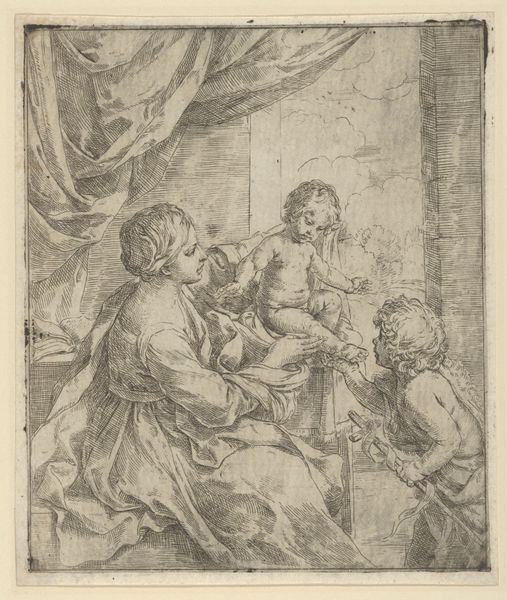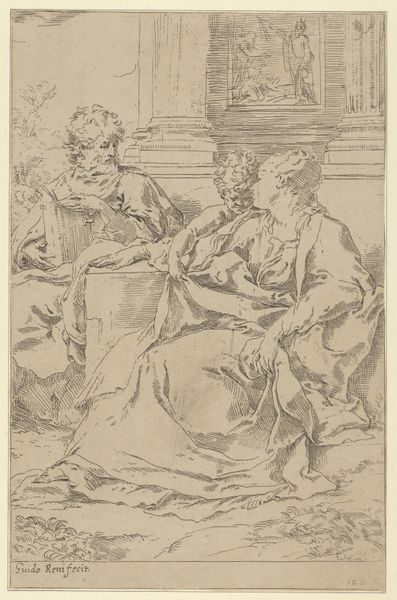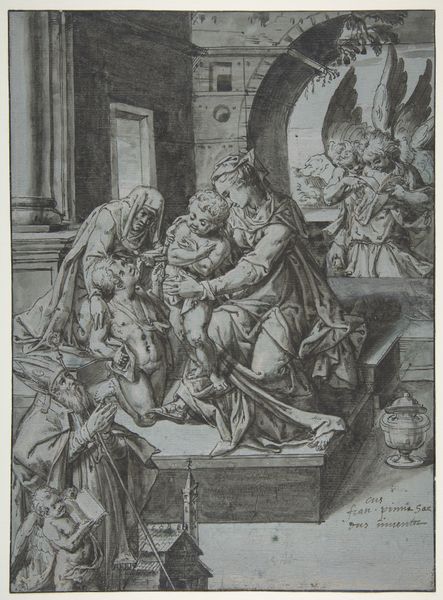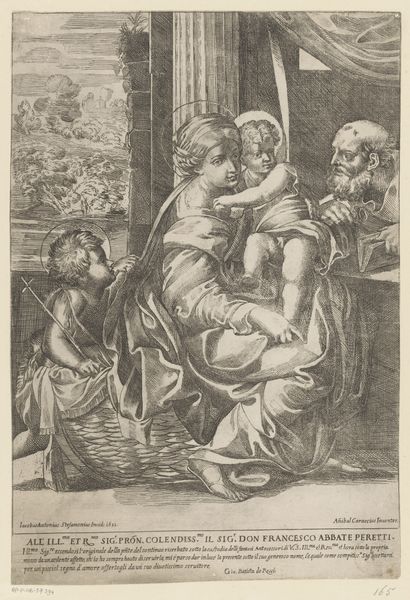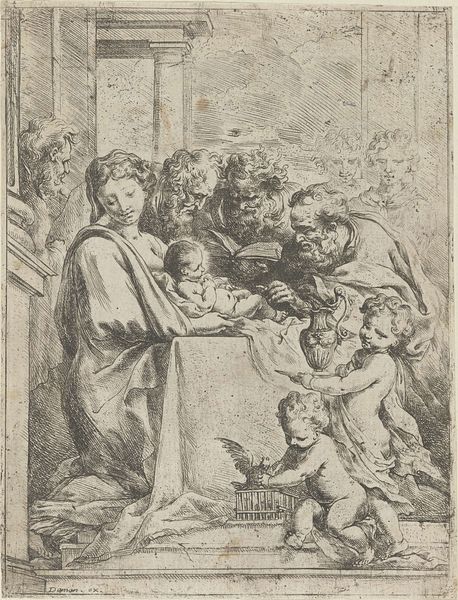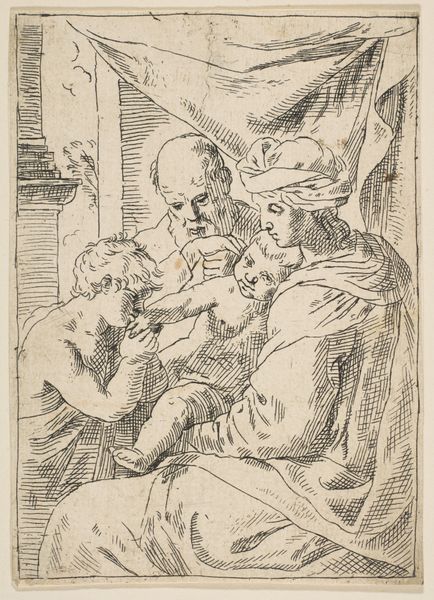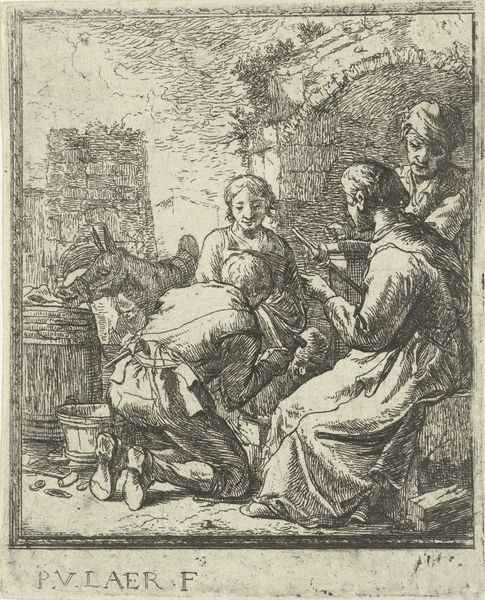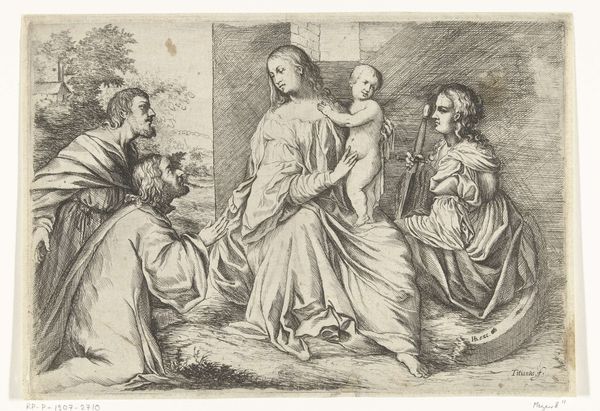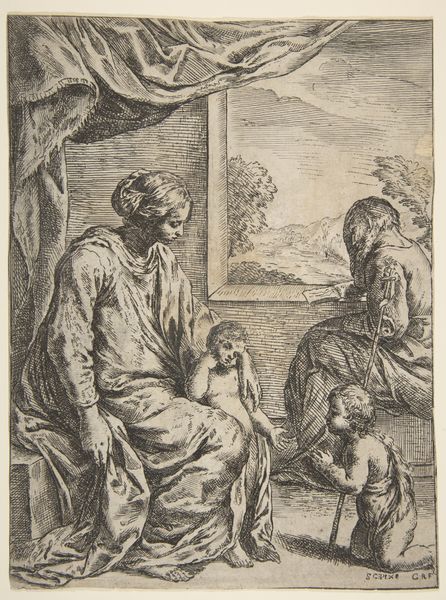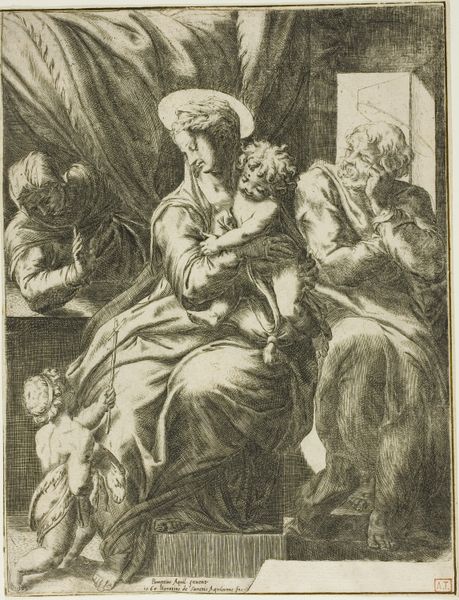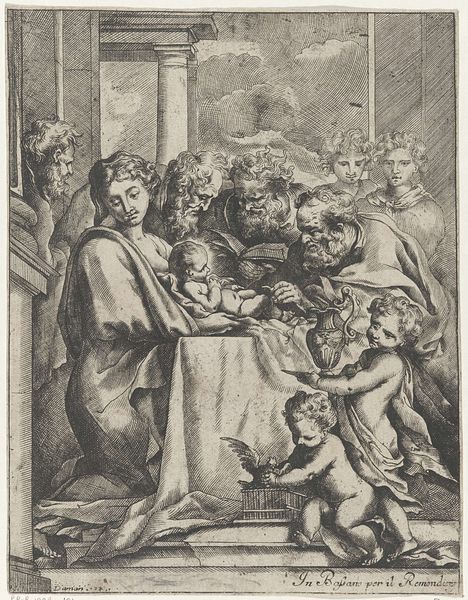
The Virgin and Child at a table with the young John the Baptist, after Reni 1595 - 1645
0:00
0:00
drawing, print, etching, engraving
#
portrait
#
drawing
#
baroque
# print
#
etching
#
figuration
#
engraving
#
virgin-mary
Dimensions: Sheet (Trimmed): 8 9/16 × 6 3/16 in. (21.7 × 15.7 cm)
Copyright: Public Domain
Curator: Considering this piece, "The Virgin and Child at a table with the young John the Baptist, after Reni," dating back to somewhere between 1595 and 1645, and realized using engraving and etching... I see an exercise in the control of materials, but also the reliance of dissemination and commodification via reproducible print. What strikes you first? Editor: The way the light and shadow are rendered. It seems like the artist is attempting to give form and volume to an image initially realized through painting. How much did prints like this one actually circulate, and who had access to them? Curator: Prints democratized images to a certain extent. Remember, access to paintings would've been restricted to the elite. Prints, however, although still costly, were traded amongst a growing bourgeois class. Think about the means of production here: engraving and etching were trades and these skills came from guilds. Are we looking at high art, craft, or industry here? Editor: All of the above? So the production and distribution had a socio-economic impact that painting did not, even though this replicates a painting. Was it also about marketing the artistry of Reni, and driving up his status? Curator: Precisely. Reproducing an image like this expands Reni’s market reach. Consider the materiality of the print itself - paper, ink, the very act of duplication. All evidence a specific type of labor. It creates a brand while spreading religious doctrine, a shrewd combination in that era. What's more the image serves to reinforce the cult of the Virgin. What might be the message it sends the working classes or bourgeoisie who consumed this art? Editor: Wow, seeing it like that changes everything. It is more than just a religious image, but an assertion of socio-economic dynamics, art as commodity... I'll never look at prints the same way again! Curator: And remember that next time you buy a postcard at the giftshop! The means of production are always saying something about who gets to consume art and how.
Comments
No comments
Be the first to comment and join the conversation on the ultimate creative platform.
